Charles W. Austin – Company A, 5th Michigan Cavalry
When my Great Great Great Grandparents, John Delos (1807 – 1851) and Anna (1813 – 1851) Austin died during the 1851 Detroit cholera epidemic, their two sons, seven-year-old Charles and five-year-old Abner, were orphaned and separated. Charles was taken in by John and Catharine Osmun of Groveland near Waterford, Michigan, who raised him as a son. He was never legally adopted by the Osmuns, however, and retained his birth name.
Charles W. Austin, my Great Great Grand Uncle, enlisted at Waterford, Michigan on August 16, 1862 at the age of seventeen. In his military records, Charles was described as being 5’7” tall and weighing 145 lbs. And — just like his younger brother, Abner (my Great Great Grandfather) — Charles had brown hair, a light complexion, and gray eyes.
Charles was a private in Company A of the Fifth Michigan Cavalry, part of the Michigan Cavalry Brigade under the command of flamboyant, young Brigadier General George Armstrong Custer. Custer’s Wolverines comprised the most famous cavalry brigade of the Civil War, which performed a central role in some of the Civil War’s most important battles. It suffered the heaviest casualties of any Union cavalry brigade.
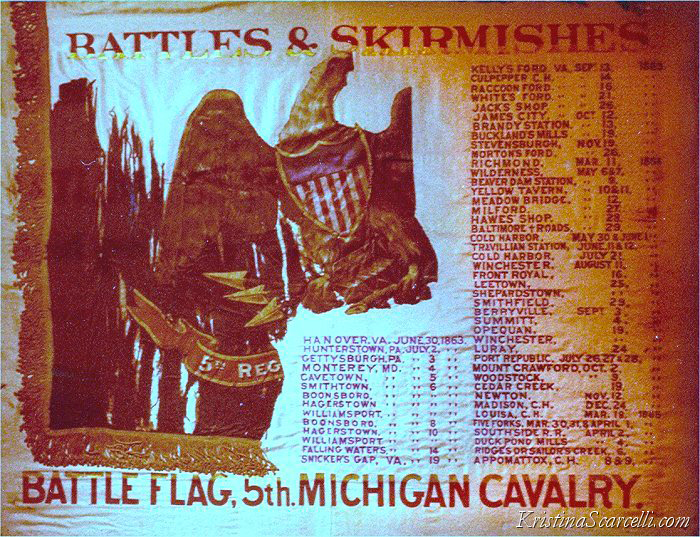
The 5th Michigan Cavalry regimental flag photographed during a trip with my parents to the Detroit Historical Museum in April of 1979.
Charles Austin was mustered in on August 26, 1862, and saw action in crucial fighting during the Battle of Gettysburg on July 3, 1863. He was wounded on July 8, 1863 at the Battle of Boonsboro, Maryland when he was struck in the right side by a piece of enemy shell. He suffered three broken ribs and the total destruction of his Hunter Case pocket watch, which took the direct hit of the shrapnel. As eyewitnesses to the event would later report, Charles’s pocket watch undoubtedly saved his life. The force of the blow rendered him unconscious and he was carried from the field by his comrades, who leaned him against a large oak tree and revived him. As Charles was awaiting an ambulance, he insisted that his horse be located so that he could ride out with his company, which he did the very next day.
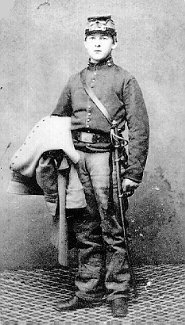
A very young Federal Cavalry private … perhaps an indication of what young Charles might have looked like. (Image source unknown.)
Despite his injuries, Charles continued to see action at numerous campaigns including Brandy Station and the Wilderness and, at some point later, also suffered a saber wound to his right rib cage very near the location of his earlier injury. Yet, he pressed on and was with his company during the largest and bloodiest all-cavalry battle of the Civil War at Trevilian Station, Virginia on June 11, 1864, where he was captured by the Confederates.
According to Federal prisoner of war records, Charles W. Austin was confined at Libby Prison in Richmond, Virginia on June 20, 1864 and sent to Andersonville prison on June 21, 1864. Interestingly, a subsequent muster out roll also indicates specifically that he was a “prisoner at Florence, Ala” at some point in time as well. Additionally, a pension file medical report dated December 3, 1885, relates that Charles “says he was ten months in Florence and Andersonville prisons.”
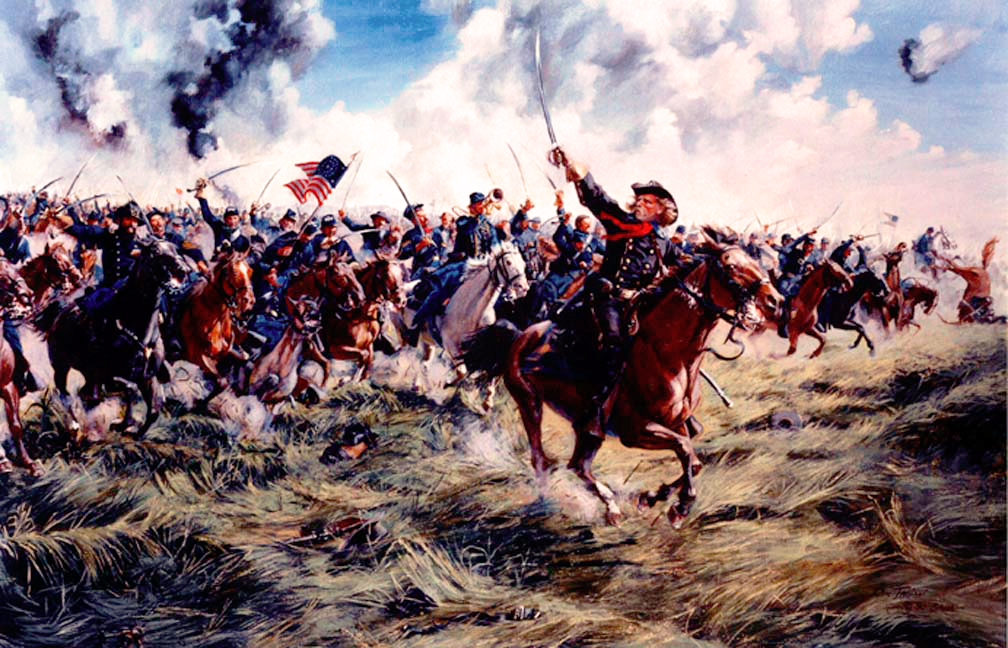
“Come On You Wolverines” by Don Troiani, depicting George Armstrong Custer leading the charge of his Michigan Cavalry Brigade. (Used with permission.)
Charles was paroled by the Confederates at Northeast (N.E.) Ferry, North Carolina on February 26, 1865 and was returned to Federal authorities on March 10, 1865 at Camp Chase, Ohio, at which time he was granted a 30-day furlough. Despite his failing health after ten months as a prisoner of war, Charles took this opportunity to travel home to Michigan. While there, he was admitted to Harper U.S. Army General Hospital in Detroit on April 8, 1865. Army Surgeon W. A. Chandler sent a report to the commanding officer of Camp Chase indicating that Charles would be unable to return to his station for a minimum of 10 days due to illness.
After his health improved, Charles reported back to Camp Chase, Ohio on May 3, 1865 but on May 13, 1865, he was transferred to Tripler General Hospital in Columbus, Ohio as a “convalescent from another hospital.”
After serving three years and nine months, Private Charles W. Austin was honorably discharged at Tripler Hospital on May 25, 1865 at age twenty. He was mustered out on June 22, 1865 at Fort Leavenworth, Kansas. Later, in his pension records, Charles was described as “a good soldier and ready for duty.”
After the war, Charles returned to the home of his foster parents, John and Catharine Osmun in Groveland near Waterford, Michigan, where he remained until the fall of 1866. In an 1887 pensioner’s affidavit, Catharine Osmun reported that the strong and able-bodied boy that left for the army had returned home very much disabled from war wounds and prison life. She stated that during the year after his return, he suffered constantly and that she “doctored him” back to health as best she could: “being, as it were, one of my family, he having lived with me since he was seven years old.”
Charles married Laura A. Downing (b. September 17, 1848) of Holly, Michigan on July 4, 1867 at age 22. The couple was married by Reverend J.R. Haskins at Fentonville, Michigan. They had one son, Frederick D., born on October 20, 1868. The family lived in Flint, Michigan for 35 years, where they attended the Court Street Methodist Episcopal Church. Charles was a charter member of the Gov. Crapo Post No. 145 of the Grand Army of the Republic and the National League of Veterans and Sons.
After battling illness for a year, Charles W. Austin passed away on June 1, 1908 at his home on Lapeer Street in Flint, Michigan at the age of 64. Laura died on March 10, 1912.
Fred Austin married Lola E. Austin (maiden name unknown) and the couple had a daughter, Mamy (September 9, 1891 – January 13, 1893), who died in infancy. Fred passed away May 25, 1906 at the age of 37.
Charles W., Laura A., Fred, and Mamy Austin are buried in Avondale Cemetery in Flint, Michigan overlooking the National Guard Armory.
Charles’s younger brother, Abner Delos Austin, enlisted at Redford, Michigan on August 2, 1862 at the age of sixteen. He was a private in Company I of the 24th Michigan Infantry, part of the famous Iron Brigade of the West, also known as the Black Hats. The Black Hat Brigade was well known on both sides as being among the Federal army’s best fighters and, just like the Michigan Cavalry Brigade, it performed a central role in some of the Civil War’s most important battles. It suffered the heaviest casualties of any infantry brigade — north or south — in the Civil War. To read my Great Great Grandfather Abner Delos Austin’s story, please click here or use the link bearing his name on the right.
Family legend has it that Charles and Abner Austin, brothers orphaned and separated as small children and who, as teenage boys, fought side-by-side without even knowing it during the bloodiest battle in American history, were never reunited until late in life, when they discovered one another’s names on Civil War pension rolls. While this has never been documented, it is our hope that Charles and Abner were indeed able to find one another before they died. It is ironic to consider that the Civil War, which tore countless American families apart, could be singularly responsible for bringing this particular family back together again.

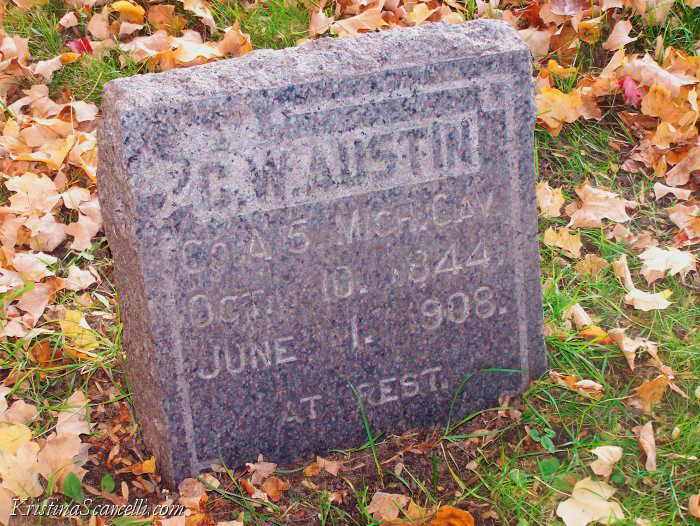

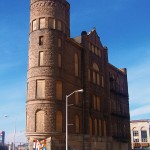 Previous Post
Previous Post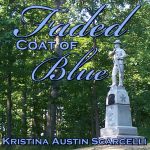 Next Post
Next Post
 Enter your email address below to subscribe.
Enter your email address below to subscribe. 











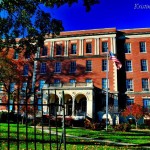
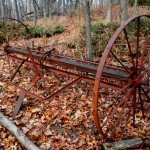
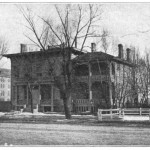
My name is Freeman Greer, Owner of Col. Stockton’s Home in Flint Mi. Aventine and Avondale cemeteries are the resting place of 276 civil war veterans. These cemeteries need to be maintained and the stories of all these veterans need to be remembered. Thank you.
Indeed they do, Freeman! Thank you!!
This is a great blog. Thanks for all your hard work and the info you give. Do you use twitter or stumbleupon? So I can follow you there. I am hoping you post again soon. I wish u keep on…
Hi W., I am so glad you enjoy my blog. During the Civil War sesquicentennial, I hope to post more often, so I’d love to have you as a follower. I do use Twitter, but mainly for posting about my music and photography projects. You can find me there at http://twitter.com/kscarcelli. Thanks for your kind words!
I am a direct descendent of Laura’s brother Andrew J. Downing. I know that Andrew’s father is George W. (sometimes called John). Do you have any more information on him or his wife Betsey? I would love to know what Downing line they originate from. You have a great blog!
Thanks!
Jennifer Downing-Beardsley
Jennifer, please email me at kristina@kristinascarcelli.com. I think I have some family information for you. Thanks!
I love the detail you have provided in this site, but more importantly my wife’s family has history tied, I believe, to this branch. I am still working on definite proof. Her family history was that her father’s grandfather was a Flint Fire Department and died doing so, which a few years later I found this: “Frederick D. Austin was killed by a live wire while working on top of a fourty-foot pole at East Kearsley and East Streets on May 26, 1906. He was 38 years of age and married. (book: The Flint Fire Department-Past & Present, 1916, page 48, found in the Flint Public Library)” I had looked for an obit or article but found nothing, and not knowing where Fred was buried, was skeptical of the date. After all this should be newsworthy. This blog has given this a new breath of life with a similar date (presumably written in stone?). Thanks so much, plus I was completely unaware of the Civil War connection of Charles, which is what I actually stumbled upon another of her branches, she has (or may have) this Charles W. Austin born 1844, but on her mother’s side she has another Charles W. Austin born 1840 connected to the Isham side. So the search continues….
Phil K., please email me at kristina@kristinascarcelli.com. I want to send you a photo of Fred’s headstone and give you the information on his burial site so that your wife can locate his grave. I am also hoping that your knowledge may be of assistance in my research as well. So pleased to hear from you!! Thanks, Kristina
Thank you for this excellent piece on your ancestor in the 5th Michigan Cavalry. It took several years, but I finally verified Paul Ellsworth of Co B was my great grandfather. I especially like the picture of the regimental flag. Its the first time I had seen it. So glad it was preserved. I located Paul’s gave at Graceland Cemetery in Chicago. He died fairly young in 1892. The good folks there had the records of his burial plot location, but there was no headstone. I applied to the VA and he now has a headstone. Thanks again, John
John, good job on getting your ancestor’s headstone. I understand that’s not always easy. Thanks for reading!
Hi Kristina, I enjoyed reading about your Great Great Grand Uncle. My Great Great Grandfather Homer Sherwood served in the Michigan 5th Cavalry as well, I am sure our relatives knew each other during this time.